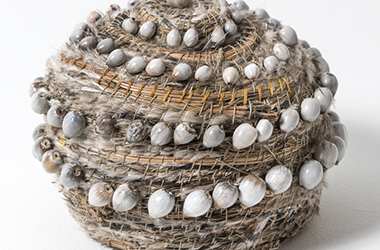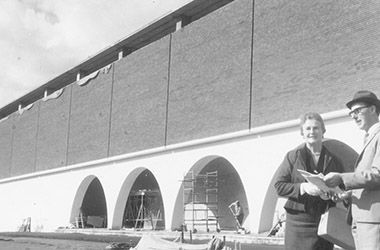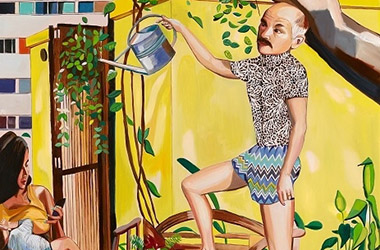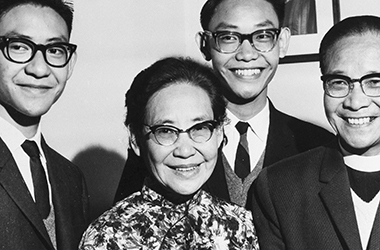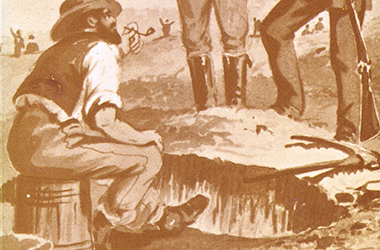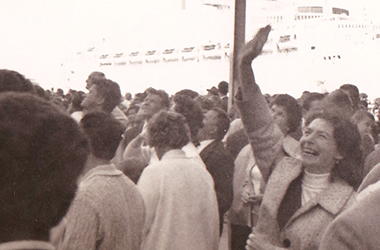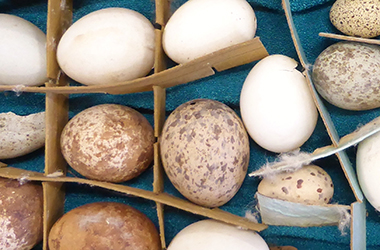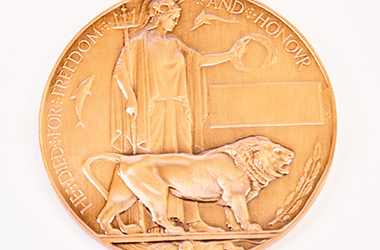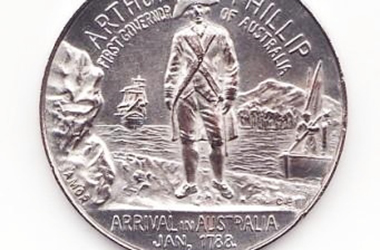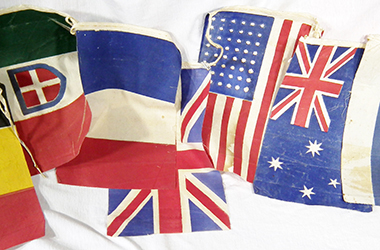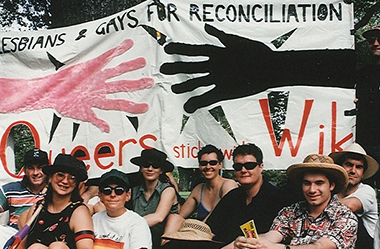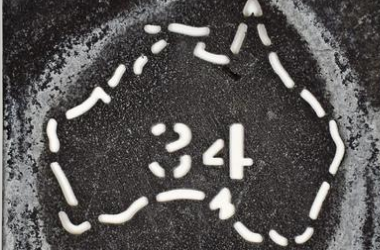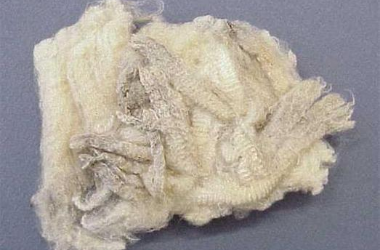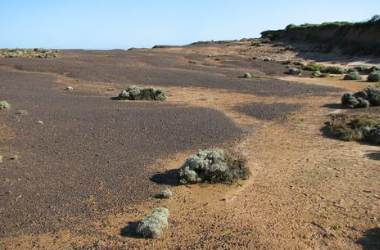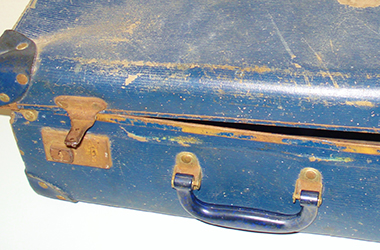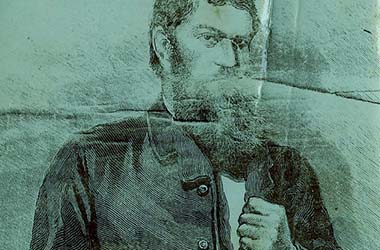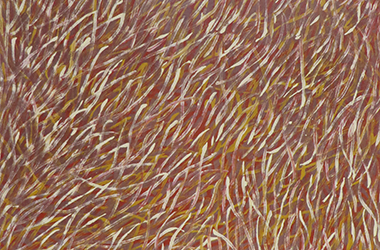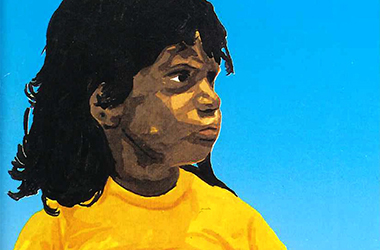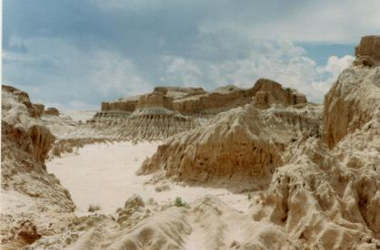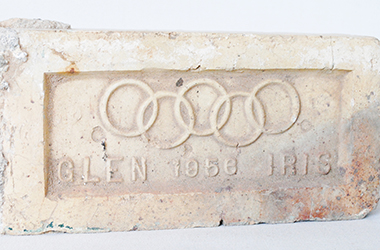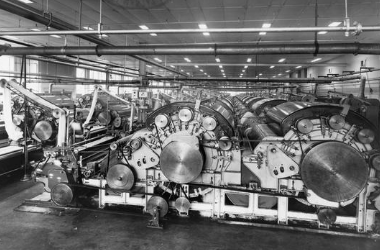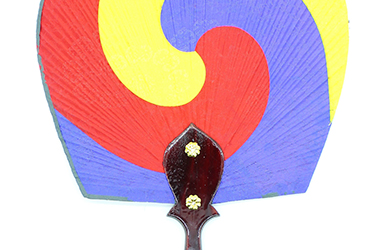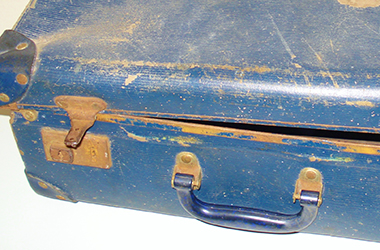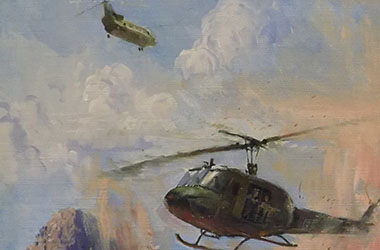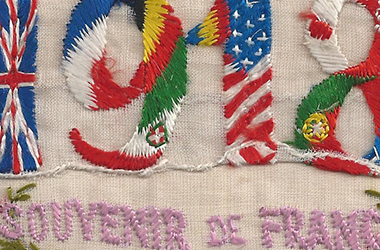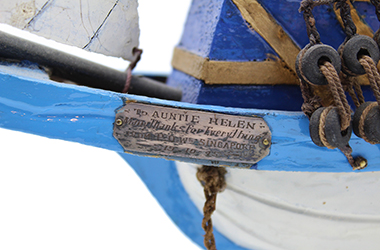Browse stories
-

3D Puzzle: The Jones' Australian-Chinese bed
Watch as this beautiful late nineteenth century bed is reassembled at its new home at the Chinese Museum, discover how a Chinese bed ended up in Hobart and then Melbourne and unwravel the meanings that can be found in the couplets and decorations on it.
Assembling this bed was like putting together a 3D jigzaw puzzle but it is a puzzle in other ways too. Made in China in the late nineteenth century to a Chinese design this bed has spent most of its life in Australia and, as far as is we know, no person with Chinese ancestry ever slept in it. Is it a Chinese bed or an Australian bed? Maybe it is both?
-

Australian Racing Families
A study of families involved in racing reveals that racing is very much in the blood. This photographic essay captures the spirit of this phenomenon and showcases the lives of four families with racing in their blood: Hoysted, Chirnside, Hutchinson, and Inglis.
The blood horse or thoroughbred is a horse especially bred and trained for racing whose ancestry can be traced back with out interruption to forebears recorded in the General Stud Book. Every thoroughbred in the world today traces its male line back to one of three foundation sires: Byerly Turk, Darley Arabian or Godolphin Arabian, who were bred in the late 17th and early 18th centuries. The bloodlines of the horse are the backbone of thoroughbred racing. Horses are always referred to in the context of their lineage, particularly their sires and dams, and family is all important.
Whilst the forebears of the humans involved with racing today may not be listed in a General Stud Book, and the line is sometimes more tenuous, their 'ancestry' is no less impressive and enduring. A study of families involved in racing reveals that racing is very much in the blood. Punter, trainer, owner, jockey, breeder or bookmaker - irrespective of profession or level of involvement, racing, in one form or another, can often be found flowing from generation to generation. Family histories are enriched with colourful tales of great uncles who trained the outside chance, cousins who almost rode the champ, and big wins and tall tales.
This is an edited version of an essay 'In the Blood', written by Annette Shiell and Narelle Symes. The full text of the essay is provided in the attached section of this story.
The full series of essays and images are available in The Australian Family: Images and Essays published by Scribe Publications, Melbourne 1998, edited by Anna Epstein. The book comprises specially commissioned and carefully researched essays with accompanying artworks and illustrations from each participating institution. It was part of the exhibition project ‘The Australian Family’ which involved 20 local museums and galleries.
-

Made in Bendigo, Cold Beer!
In 1857 at the height of the gold rush, with people pouring into Central Victoria from all over the world, three brothers from Denmark – Moritz, Julius and Jacob Cohn – founded a small cordial factory in the booming town of Bendigo.
They went on to build an empire and, through introducing lager, which is served cold, to the country, changed the drinking preferences of Australians.
Cordial was a necessity at the time as water was considered unpalatable. The Cohn cordial products were successful and the brothers went on to produce other staples such as fruit preserves. The Cohn Brothers were canny businessmen and at the peak of their success Cohn products were sold across the country and exported to the United Kingdom and Asia. The brothers went on to hold prominent positions on the local Council, and were part of the group that founded the Bendigo Land and Building Society, which became the Bendigo Bank.
Traces of the impact that Cohn products had on the daily lives of Australians, particularly those in Central Victoria, can be found in vintage bottles, wooden crates and signs that have been collected and preserved.
The legacy of their business and civic activities are told through interviews with their descendent, Helen Bruinier, Bendigo Art Gallery Curator, Sandra Bruce, and Frank Barr, the sign painter of the Cohn’s Cordial sign in Bridge Street, Bendigo.
-

Panorama: A question of perspective
TarraWarra Museum of Art is located in the picturesque Yarra Valley in Victoria, Australia.Visitors to the Museum are afforded a spectacular, resonant and panoramic experience of ‘nature’ through the north facing windows. The view stretches towards the distant Toolangi rainforest across planted vines, native bushland and farmland.
The region is surrounded by a spectacular mountain range that includes Mt Baw Baw, Mt Donna Buang, Mt Juliet, Mt Riddell and Mt Toolebewong. As these names attest, we are situated in an area of significant Indigenous history and colonisation. Tarrawarra is a Wurundjeri word that translates approximately as ‘slow moving water’ and is the name given to the area in which the Museum is located.
The Yarra Valley sunsets, soundscapes, seasonal changes, Indigenous histories, ecological vulnerabilities and environmental challenges are in a complex and ever changing entanglement. Since 2012, the Museum has explored this context through special exhibitions and commissions, forums and performances, screenings and lectures. As such, the Museum has sought to understand the complexity of our site, and with that, the broader intersections between art and landscape. Artists provide us the opportunity to ‘see’ the landscape in a different way. They imagine it, call it into being, reflect upon it, animate it, unravel its hidden histories, and expose its ecological sensitivities.
Panorama, the exhibition, was an integral part of this ongoing conversation and imaginative exploration. Our intention was not so much to write a narrative history of Australian landscape painting. Rather, it was to be attuned to the intermingling of voices, points of view, perspectives - colonial and modern, contemporary and Indigenous – that comprise the uniquely Australian persistence to unravel the ‘patter’ of nature.
As a phenomenon to which we are all very accustomed, it is easy to overlook the simple fact that for a landscape to come into being it requires a ‘point of view’, a subjective consciousness to frame a particular expanse of the natural world. As the art historian Simon Schama remarks in his landmark survey on the genre, Landscape and Memory, ‘it is our shaping perception that makes the difference between raw matter and landscape’. [i] The centrality of the viewer’s position in constructing a vista is clearly evident in terms such as ‘perspective’, ‘prospect’, and ‘view point’ which are synonymous with ‘position’, ‘expectation’, and ‘stance’. This highlights that there is always an ineluctable ideological dimension to the landscape, one that is intimately entwined with a wide range of social, economic, cultural and spiritual outlooks. Turning to the notion of the panorama, a brief survey of its conception and infiltration into everyday speech, reveals how our way of seeing the landscape is often tantamount to the formation and delineation of our personal, communal, and national identities.
The term panorama was first coined to describe the eponymous device invented by the British painter Robert Barker which became a popular diversion for scores of Londoners in the late 18th century. Consisting of a purpose built rotunda-like structure on whose cylindrical surface landscape paintings or historical scenes were displayed, ‘The Panorama’ contained a central platform upon which viewers observed the illusionistic spectacle of a sweeping 360 degree vista. With its ambitious, encyclopaedic impulse to capture and concentrate an entire panoply of elements into a singular view, it is telling that this construction would soon give rise to an adjective to describe, not only an expansive view extending in all directions, but also a complete and comprehensive survey of a subject. As the curators Jean-Roch Bouiller and Laurence Madeline argue, these different meanings convey ‘the very essence of the panoramic phenomenon: the central role of perspective, a certain appropriation of the world that follows, the feeling of dominating a situation simply due to having a wide and complete view’.[ii] Indeed, as art historian Michael Newman reveals, the whole notion of the panorama originated in military conceptions of the landscape as a battlefield, whereby strategic vantage points are key to tactical planning.[iii] Underlying its transformation into a form of popular entertainment, the panorama is rooted in a particular form of political authority based on surveying, mapping and commanding the subject of the view.
In this exhibition, the term panorama was invoked to acknowledge that ways of perceiving the landscape have their own histories which have arisen out of particular social, political and cultural contexts. As the landscape architect Anne Whiston Spirn contends: ‘In every landscape are ongoing dialogues; there is “no blank slate”; the task is to join the conversation’.[iv]However, far from claiming to present an unbroken view or a complete survey, Panorama challenged the very notion of a single, comprehensive monologue by presenting a series of works which engaged with the discourse of landscape in a diverse range of voices. Taking advantage of the tremendous depth and strength of the TarraWarra Museum of Art collection gifted by its founders Eva Besen AO and Marc Besen AC, the exhibition was staged in two parts, with a different selection of paintings exhibited in each half. Displayed in distinct groupings which explored alternative themes and concerns, Panorama highlighted the works of key artists who have redefined, expanded and interrogated the idea of the landscape in ways which suggest that it is far from settled.
Further Information
[i] Simon Schama, Landscape and Memory, New York: Vintage Books, 1996, p. 10.
[ii] Jean-Roch Bouiller and Laurence Madeline, Introductory text for the exhibition I Love Panoramas, MuCEM and the Musées d’Art et d’Histoire, Geneva, 4 November 2015 - 29 February 2016, URL: http://www.mucem.org/en/node/4022
[iii] See ‘The Art Seminar’ in Landscape Theory, (eds. Rachael Ziady DeLue and James Elkins), New York and London: Routledge, 2008, p. 130.
[iv] Anne Whiston Spirn, ‘“One with Nature”: Landscape, Language, Empathy and Imagination’ in Landscape Theory, 2008, p. 45.
-

Chinese Australian Families
Dreams of Jade and Gold: Chinese families in Australia's history
From the 1840s onwards, Chinese people have come to Australia inspired by dreams of happiness, longevity and prosperity - of 'jade and gold' in a new and strange land. For most of that time, Chinese people in Australia have been predominantly male. Most of them were temporary sojourners who came to earn money for their families back in the village - most did not intend to settle in Australia.
Despite the predominance of male sojourning, a small proportion of Chinese men in nineteenth-century Australia brought their wives and children to live with them, or married here. As Australian-born children of these families grew to adulthood, their parents would seek brides and grooms on their behalf amongst other Chinese families in Australia.
The majority of post-1905 Chinese brides of Chinese-Australian sons were never able to settle here. Some children were born in China or Hong Kong. Some were born in Australia. Families like this were split for decades, until immigration laws were relaxed.
In the nineteenth century, many of the Chinese men who wanted wives in Australia married or lived de facto with non-Chinese women. At least 500 European-Chinese partnerships are estimated to have occurred before 1900.
Despite repeated waves of racism and official discrimination from the 1840s to the 1970s, a sizeable number of families of Chinese background have put down roots in this country.
In 1973 the Whitlam government abolished racist provisions in immigration laws. Since then, the number of ethnic Chinese migrants has increased dramatically. They have come primarily as family groups - not as sojourners, but as permanent immigrants. They come not only from China and Hong Kong, but also from Malaysia, Singapore, Vietnam, Cambodia and Indonesia, as well as from further afield. The Chinese are now a highly visible and generally accepted part of the Australian community of cultures.
The text above has been abstracted from an essay 'Dreams of Jade and Gold: Chinese families in Australia's history' written by Paul Macgregor for the publication The Australian Family: Images and Essays. The full text of the essay is available as part of this story.
This story is part of The Australian Family project, which involved 20 Victorian museums and galleries. The full series of essays and images are available in The Australian Family: Images and Essays published by Scribe Publications, Melbourne 1998, edited by Anna Epstein. The book comprises specially commissioned and carefully researched essays with accompanying artworks and illustrations from each participating institution.
-

Lola Montez, Star Attraction
When gold fever gripped central Victoria in the 1850s, hundreds of thousands of people arrived from all over the world, including Africa, the Americas, China, Europe and India.
The tent cities that appeared overnight brought people together regardless of whether they were rich or poor, aristocrat or convict, man or woman, lucky or unlucky. Everyone co-existed side by side, creating a society in a state of flux. With roles less fixed, it was a relatively liberal time.
But by 1856 the teeming, transgressive society began to settle. Ballarat was becoming an established town where men were comfortable to bring their wives and families. The process of social stratification, and the rise of associated moral agendas, began to take hold.
It was into this atmosphere that international sensation, Lola Montez, arrived.
Montez was born Maria Eliza Dolores Rosanna Gilbert in Ireland in 1818. Self-made, creative and charismatic, she mixed with notable figures of her day, including George Sand and Emperor Nicholas I of Russia. She was politically influential, and the consort to King Ludwig I of Bavaria, who made her Countess of Landsfeld. Her other lovers included composer Franz Liszt and writer Alexandre Dumas.
Montez was hugely popular and controversial, just as pop star, Madonna, was a century later. Crowds descended on the Victoria Theatre in the Goldfields to witness her notorious 'Spider Dance', a titillating version of a tarantella.
Through Montez and her 'Spider Dance' (as represented by the interpretive theatre presented at the Sovereign Hill Outdoor Museum), this story explores the broader social forces at play on the goldfields at the time she visited.
The story also includes several moving postcards, giving snapshots of life on the goldfields in the nineteenth century.
-

In the Face of Uncertainty
Some of the material in this story contains themes and graphic imagery that is quite confronting and may disturb or offend some viewers.
The industrial nature of warfare during the First World War led to horrific injuries.
These injuries were of an unprecedented scale that medical science had never before experienced. Men suffered excruciating and deforming facial injuries. propelling medical science into a period of rapid innovation and development.
This pioneering facial reconstructive surgery was undertaken during and in the aftermath of the First World War and it offers a real insight into how surgeons began to understand modern plastic surgery and facial reconstruction.
This story is told through the Sidcup Collection, held by the Royal Australasian College of Surgeons.
The Sidcup Collection is named after the Queen Mary’s Hospital Sidcup near Kent, England. It is where this pioneering surgery took place, and the collection comprises medical records, patient files, illustrations, photographs, sketches, x-rays and plaster casts. The collection highlights the significant contribution Australian surgeon Henry Simpson Newland and his staff made to modern facial surgery.
Diagnostic tools and techniques used by the surgeons were particularly innovative. Artist Daryl Lindsay worked for some time at the hospital, providing colour illustrations of the injuries which served to capture the patients’ whole being. In a time before 3D imaging, plaster casts of the mens' faces were taken to provide surgeons with a comprehensive understanding of the injuries.
The Sidcup Collection provides a window into how medical science and innovation responded to war as well as an insight into the surgeons, the patients and the ideas that make up this extraordinary story.
-

Punching the Bundy
In 1888, Williard LeGrand Bundy patented the first employee time clock. A year later, he and his brother founded the Bundy Manufacturing Company, which was to become part of the computing giant International Business Machines, or IBM.
The early Bundy clocks were mechanical, and employees in early industrial history used cards that were punched by the machine to record their working hours, or to 'bundy' on.
But in the Interknit hosiery factory in Clunes the expression used was 'punching the bundy'.
The Clunes mill was established in the 1920s, in a decommissioned state school building. In 1939, it was bought by Ballarat company Interknit, and became the Clunes Interknit Mill.
The Interknit Hosiery Company employed many locals. Initially a socks manufacturer, and commonly known as 'Interknit Sox', by 1981 Interknit had begun to manufacture jumpers.
Representing a time when industry was more local to its markets, Interknit supplied socks to Victorian Football League, and then the Australian Football League, teams and later jumpers well. Interknit also supplied socks to cricket teams and the Australian armed forces.
The Bundy clock held at the Clunes Museum was the original time clock from the Interknit factory.
In this story, former workers recall working at the Interknit mill, and especially using the time clock or 'Punching the Bundy'.
-

Unearthing a 19th Century Chinese Kiln
When gold was discovered in Victoria in 1851, stories of treasures of mythical proportions quickly flowed across the world. Desperate to support their families, Chinese men turned to the new opportunities available at ‘Tsin Chin Shan’ - the land of the New Gold Mountain. The majority of Chinese migration to the Bendigo goldfields occurred during the mid-1850s when 16,260 males and one female arrived at Guichen Bay in South Australia and walked overland to Victoria.
By the end of the Bendigo gold rush, many miners were drawn away from Bendigo by news of gold elsewhere in Victoria, Australia and New Zealand. As mining became less profitable, market gardening became a common Chinese occupation, with miners adapting their agricultural skills learnt in China to Australian conditions.
From the 1850s, up to 1,000 Chinese populated an area called Ironbark Chinese Camp. It was reported in 1859 that the large camp had greengrocers, butchers, barbers, doctors, gambling houses, a wine shop, and a joss house. That same year the A’Fok, Fok Sing and Company constructed their brick kiln near the southern end of the camp. The kiln was in operation until it was abandoned in 1886, when the site was transformed into a market garden. The camp area was occupied by Chinese people from the 1850s for at least a hundred years.
In 2005, a section of the mid 19th century Chinese brickmaking kiln was unexpectedly discovered. To determine the condition and extent of the kiln, Heritage Victoria archaeologists conducted a preliminary excavation, with support from an expert in South-east Asian kilns, Dr Don Hein, and support from numerous students and volunteers.
The excavation provided an insight into the size of the kiln, how it operated and a vivid illustration of the transfer of Old World technology to a new country. The A’Fok, Fok Sing and Company kiln is the only known example of a Chinese brick making kiln outside of China. In addition to the kiln, numerous artefacts related to the camp and its activities were discovered, including a variety of food jars, handmade gardening tools, buttons, combs, bowls, gambling tokens, and Clydesdale horseshoes (the horses were used to plough the fields).
The archaeologists covered the excavated section of brick kiln with sand and plastic to protect its fragile fabric. Another excavation is required to uncover the kiln’s working floor and investigate its flue and firing chamber. Only then will we be able to tackle the multitude of questions that still remain to be answered.
The kiln is listed on the Victorian Heritage Register. For more information on the kiln or other heritage sites visit The Victorian Heritage Database
-

Marianne Gibson's Crazy Patchwork Quilt
In 1876, the Japanese Pavilion at the Philadelphia Centennial Exposition caused quite a stir. It featured ceramics and other art objects that were asymmetrical, or “crazed”. Whilst the interest created in America was telling of the whole mood of modernism (which questioned and reformed traditional aesthetic ideas), its effect on the everyday lives of women was seen in the groundswell of support for crazy patchworking (also known as crazy quilting).
Crazy patchwork became a hugely popular ‘craze’ that lasted until the 1920s, with women’s publications full of the opinions of both followers and protestors. Crazy patchwork is differs considerably from traditional patchwork quilting: where traditional patchwork is batted, or filled, and composed of precise patches arranged into neat and sometimes complex geometric patterns, crazy patchwork consists of uneven patches that are composed of any variety of fabrics (especially exotic fabrics at the start of the craze) and are embellished with all sorts of trimmings: lace, embroidery, buttons, ribbons. In addition to this crazy patchwork quilts are very personalised.
Crazy quilts broke all the rules of traditional quilts and were highly experimental and creative: makers were not afraid to use clashing colours or to cover every surface with designs. Cushions and pillows were also made to the style. It was through this craze and Victorian women’s domestic creative work that modernism was ushered into the home.
Marianne Gibson was born in Armagh, Ireland in 1837. As a young woman she and her sister accompanied their uncle to Australia and settled in Wangaratta. In 1864 Marianne married Alexander McCullen Gibson, who operated a successful general store.
Marianne’s skill with needlepoint, her access to fine fabrics of the day, including silks and European lace, and her creative instinct can all be seen in the remarkable Crazy Patchwork Quilt known as the Marianne Gibson Quilt. Replete with Australian motifs, including flora and birdlife, and personal symbols, such as tributes to a child she lost, the quilt is dated and signed by Marianne, indicating both her creative ownership and her intention for the quilt to be kept as an heirloom.
It is precisely because it was honoured as an heirloom that it survives in such condition to this day. Donated to the collection of the Wangaratta Historical Society by Alma Gard, it is one the finest and best-preserved crazy patchwork quilts from the Victorian era in the world.
-

Pangerang Country with Freddie Dowling
Indigenous Warning: Please be aware that this story contains imagery and representation of people that may be deceased, and images of places that could cause sorrow.
In this story Freddie Dowling, Pangerang Elder, introduces us to several Pangerang stories and sites.
The Pangerang people were a nation of sub-clans who occupied much of what is now North Eastern Victoria stretching along the Tongala (Murray) River to Echuca and into the areas of the southern Riverina in New South Wales. Their land includes the Wangaratta, Yarrawonga and Shepparton areas through which the Kialla (Goulburn) and Torryong (Ovens) Rivers flow. The approximate boundaries are south to Mansfield, west to Echuca, east to Chiltern and north to near Narrandera in New South Wales.
Freddie Dowling learnt the stories of the indigenous people of this area from his grandmother, Annie Lewis, and his father, Frank ‘Munja’ Dowling.
The Pangerang words used in this story were written down by Annie Lewis in 1900. She learned them from her mother, Luana ‘Lily’ Milawa. Freddie remembers that both his grandmother and father spoke these words. His father also taught him to speak while hunting and travelling in the bush of their country.
The word Pangerang is often written and known as Bangerang, and Banerang, 'because, in our language, "puh" and "buh" sound similar' (Freddie Dowling).
-

Tales from the deep
As the rest of the world became enthralled in the exciting and mysterious world of scuba diving - devouring the anecdotes of early adventurers such as Jacques-Yves Cousteau and Lloyd Bridges - Victoria’s own pioneers were hard at work.
John Black is one of Australia’s early underwater explorers. He began his career in abalone diving in 1951 and became involved in the new and developing sport of scuba diving in the 1960s.
At the time, specialty equipment was hard to get so John and his colleagues used the DIY attitude to create boats out of wooden planks and Victa lawnmower engines and breathing equipment using hoses and hotel CO2 gas tanks. With these extraordinary apparatus they were among the first to enter the pristine underwater wilderness of the Gippsland coast.
John’s stories describe the evolution of diving gear, the triumphs and near-misses of working in a burgeoning field and the excitement of being the first to dive on the remains of Victoria’s spectacular shipwrecks.
John was interviewed as part of the Heritage Victoria East Gippsland Oral Histories project in 2003. This story includes audio extracts from his interview and a transcript of his full interview.
-

Drouin: A Small Town at War
A collection of photographs of the dairying town of Drouin in West Gippsland Victoria taken during the Second World War.
In 1981, two packets of old photographs were returned to Australia by the New York office of the Australian Information Service. Inside these packets were images from the dairying town of Drouin, in West Gippsland, taken during the Second World War.
Presenting the ideal picture of a prosperous and hard-working Victorian town dealing with rationing and manpower shortages caused by the war, these photographs were part of the Department of Information's war effort publicity campaign.
Photographer Jim Fitzpatrick was commissioned to take the photos in 1944 and 1945, and he concentrated on images of healthy and industrious women and children, as well as soldiers on leave and men working in the town. The photographs appeared in the bimonthly South West Pacific which was distributed free to overseas press, and was designed to promote Australia to her allies, particularly the United States.
The images that make up this story now form part of the Drouin Town and Rural Life During World War II collection at the National Library of Australia.
-

Geelong Voices
Stories of World War 1, World War 2 and the Vietnam War as told by Geelong residents.
During World War 1 and World War 2 Geelong residents - whether joining the Armed Forces as soldiers, nurses, pilots, or helping out at home on projects such as the Australian Women’s Land Army - were swept up in the action. Motivated by youthful enthusiasm, the desire for adventure, and intense feelings of patriotism, they joined in hordes. For many, however, the war was not what they expected.
The Geelong Voices Oral History Project was established in 2001. The project collected recordings of diverse programs broadcast by a range of groups - including multicultural groups, women’s groups, trade unions, Aboriginal groups, youth groups and Senior Citizen’s groups - on 3YYR, Geelong Community Radio from 1988 to 2000.
Keeping in Touch and Koori Hour were two such programs. Keeping In Touch was a nostalgic program hosted by Gwlad McLachlan. Gwlad conducted interviews delving into historical aspects of Geelong and Geelong West, including world scale events such as WW1 and WW2, that shaped both the city and its people.
Koori Hour was a Wathaurong Aboriginal Co-operative Radio Program hosted by a range of people including Richard Fry and Gwenda Black, and consisted of talk about community activities, messages to friends and family, music and discussions about current events. One such event was the launch of “Forgotten Heroes” a book about the overlooked contribution of Aboriginal people to the Australian Armed Forces.
Over 200 of these interviews were recorded off the radio by Gwlad’s neighbour and her husband, Colin. Many of these recordings have been preserved and are available to listen to in digital format at the State Library of Victoria and the Geelong Heritage Centre.
-

A Station with a Town Attached
"Don't you overlook that Maryborough station, if you take an interest in governmental curiosities. Why, you can put the whole population of Maryborough into it, and give them a sofa apiece, and have room for more." Mark Twain, during his 1895 tour of Australia.
Twain’s remark stuck, and Maryborough became known as the railway station with a town attached.
Why was Maryborough chosen for one of the nation's grandest stations? Was it meant for Maryborough, Queensland? Was it indeed a ‘governmental curiosity’, a monumental bureaucratic mistake?
In fact, neither is the case. The Maryborough Station tells a much larger story: the vision for a rail-connected Victoria in the age that preceded the motor engine. Maryborough would be a crucial junction between the Wimmera, Geelong, Ararat, Warrnambool, Ballarat, Bendigo and Melbourne, especially for freight such as wheat.
The original station was built in 1874 but, as part of the 'Octopus Act' of 1884, Parliamentarians began arguing the case for a grander station.
The new Queen Anne style red brick building with stucco trimmings and Dutch-Anglo influences was erected in 1890-1, with 25 rooms, an ornate clock tower, Flemish gables, oak wall panels, a large portico, and a spectacular platform veranda - the longest in country Victoria.
Here, oral histories, expert opinions and archival photographs from local collections are presented, giving us a sense of the station's importance, its role in an earlier era and, as a magnificent late 19th century Australian building, the place it continues to hold in the district.
-

The Girl from Carisbrook
In 1881 an itinerant blind missionary, Thomas James, was traveling the country teaching Braille. In Carisbrook he came across eight-year-old Tilly Aston. Through learning Braille, Aston would go on to alter the destiny of Australians who are blind and vision impaired.
Matilda Ann Aston (1873-1947), the youngest of 8 children, was born vision impaired losing her sight completely by the age of 7. When Thomas James arrived in Carisbrook, Aston's father Edward, a boot maker, had been dead 6 months, leaving his wife Ann to support the impoverished family on a midwife’s wages.
Following a visit to Carisbrook by the Victorian Asylum and School for the Blind choir, Aston enrolled as a boarder at the school. At 16 she became the first blind person to matriculate.
In 1894 she founded the Victorian Association of Braille Writers (later the Victorian Braille Library). In 1895 she co-founded the Association for the Advancement of the Blind, which in 2004 became Vision Australia.
During Aston's time at the Association it obtained improved rights and services of international significance, including the world’s first voting rights for people who are blind and vision impaired and free postage of Braille.
Tilly Aston’s achievements are formidable. As well as being Australia's first blind teacher, she was a distinguished and critically acclaimed writer, producing 7 books of verse.
Tilly received a Commonwealth grant for her writing in 1935, and the King’s Medal for Distinguished Citizenry twice, in 1935 and 1937.
Aston’s legacy survives in the lives of people who are vision impaired throughout Australia, but her memory is particularly cherished in her home district, where the Maryborough-Midlands Historical Society holds several objects relating to Tilly, including her childhood doll.
-
 Brian Allison
Brian AllisonJohn Harry Grainger
Architect and Civil Engineer
John Harry Grainger was a creative figure, largely overlooked by history. He receives a brief mention in the much-examined life story of his famous son, the composer and pianist Percy Grainger, where he is depicted as a proud but ineffectual father.
Grainger's prolific output as an architect and his extraordinary talents for bridge building have not yet received due recognition.
The material presented here is sourced from the Grainger Museum Collection at the University of Melbourne. Additional material is held in the Public Record Office of Victoria and in the State Library of Victoria collections.
-

North Shore: Geelong's Boom Town 1920s-1950s
In its heyday of the 1920s - 1950s, North Shore (a small northern suburb of Geelong) was the hub of industrial development in Victoria’s second city.
Situated against the backdrop of Corio Bay, North Shore and its immediate surrounds was home to major industries including Ford, International Harvester, Shell, the Corio Distillery and the Phosphate Cooperative Company of Australia (the 'Phossie').
Residents grew up with these companies literally over the back fence and many of their stories depict childhood memories of mischievous exploration. Many residents were employed by the industries, some hopping from job to job, whilst others spent the majority of their working lives at the likes of Ford or the Phossie.
At the commencement of World War II in September 1939, much of the local industry was placed on war footing. Two thirds of the newly opened International Harvester was commandeered by the R.A.A.F. and an ad hoc airfield was established. The U.S. Air Force arrived shortly thereafter.
The presence of American servicemen has left an enduring impression on the North Shore community. Their arrival was the cause of much local excitement, particularly among the children who made a pretty penny running errands for them. They were also a hit with the ladies, who enjoyed a social dance at the local community hall. The story of the American presence in North Shore remains largely untold, and the reflections of local residents provide a fantastically rare insight into a unique period in Victorian history.
A special thanks to local historians Ferg Hamilton and Bryan Power for their assistance during the making of this story. Also thanks to Gwlad McLachlan for sharing her treasure trove of Geelong stories.
-

On Your Bike!
The Ballarat community has had a long-standing fascination with bicycles and cycling since the arrival of the first velocipede in the 1860s.
The first bicycles in Ballarat were met with a mixture of bemusement, curiosity and criticism from locals. Since then, this two-wheeled vehicle has captured our hearts and become a fixture on Ballarat’s roads and tracks.
On Your Bike! is a celebration of Ballarat’s love of cycling. It is a journey into the development of Ballarat’s cycling movement which has been assisted by improved bicycle technology, local manufacturing industry and cycling clubs.
-

World War One: Coming Home
From 1920 until 1993, Bundoora Homestead Art Centre operated first as Bundoora Convalescence Farm and then as Bundoora Repatriation Hospital.
For more than seventy years, it was home to hundreds of returned servicemen. These men were not only physically damaged by their wartime experiences, their mental health was also dramatically affected. Despite the severe trauma, sometimes it took years or decades for the conditions to emerge.
For some servicemen, this meant being unable to sleep, hold down a job, maintain successful relationships or stay in one place, whilst others experienced a range of debilitating symptoms including delusions and psychosis. While these men tried to cope as best they could, they were rarely encouraged to talk openly about what they had seen or done. The experience of war haunted their lives and the lives of their families as they attempted to resume civilian life.
At this time, there was little understanding around trauma and mental health. For some returned servicemen and their families, it was important that their mental illness was acknowledged as being a consequence of their war service. This was not only due to social stigma associated with mental illness generally, but also because war pensions provided families with greater financial security.
This is as much the story of the Bundoora Repatriation Hospital as it is the story of a mother and daughter uncovering the history of the man who was their father and grandfather respectively. That man was Wilfred Collinson, who was just 19 when he enlisted in the AIF. He fought in Gallipoli and on the Western Front, saw out the duration of the war and returned home in 1919. He gained employment with the Victorian Railways and met and married Carline Aminde. The couple went on to have four children. By 1937, Wilfred Collinson’s mental state had deteriorated and he would go on to spend the remainder of his life – more than 35 years – as a patient at Bundoora.
We know so little about the lives and stories of men like Wilfred, the people who cared for them, the people who loved them and the people they left behind. For the most part the voices of the men themselves are missing from their own narrative and we can only interpret their experiences through the words of authorities and their loved ones.
-

Caroline Chisholm's Scrapbook
Caroline Chisholm, 19th century social reformer and philanthropist, left few personal effects to shed light on her remarkable life.
This scrapbook, handed down through the Chisholm family, and presented to the Museum by the family of a Chisholm historian, consists of material relating to Chisholm's work assisting immigrants, both to emigrate and once they had arrived.
In the scrapbook we find newspaper clippings, public notices, posters, correspondence and minutes; dating from 1843. Posters advertise the immigration lectures she gave across Great Britain; railway tickets stamped for free indicate the distances she travelled and the official support for her project; invitation cards reveal a woman circulating in high society, where fundraising efforts would have been concentrated; lists of names record the people she assisted financially to migrate to Australia.
The ephemera of life, so easily dispersed and discarded have been preserved in perpetuity in a humble ledger.
-

Dimitri Katsoulis, Greek Puppet Master
Traditional Greek shadow puppet theatre evolved from the Turkish model, which dates back to at least the 16th century.
The central figure is the character Karaghiozis, who relies on his wit and cunning to extricate himself from precarious situations. He and other characters are involved in humorous and satirical moral tales that comment on social and political life.
Dimitri Katsoulis immigrated to Melbourne in 1974 to escape the Junta regime that repressed Greek artists. He had trained in Greece with theatre and film companies as an actor and technician, as well as in shadow puppetry with masters of the art form. While earning a living in a Melbourne metal factory, he co-founded the Children's Theatre of Melbourne. Dimitri performed Greek shadow puppetry until 1991, exploring contemporary and controversial issues such as women's equality, and the isolation of migrant women and children.
-

The Leviny Sisters
Buda historic house and garden in Castlemaine is a remarkable archive of a family, occupied by two generations of the Leviny family over 118 years.
Ernest, who bought the house in 1863, and Bertha Leviny had 10 children, all of whom enjoyed a happy and privileged home life and received a well-rounded education, particularly in the arts. Five of the six Leviny daughters spent most of their lives at Buda, and the house and garden contains a rich legacy of their creative spirit.
Mary Florence, Beatrice Kate, Gertrude Olga Louise, Bertha Dorothy and Hilda Geraldine grew up at a time when women were being given opportunities for a higher education, and the Leviny girls were encouraged to do this. Their father’s wealth, resulting from his success in business on the Castlemaine goldfields, gave them choices in life, and they were under no particular pressure to marry or earn a living.
These five Leviny daughters remained single, giving them the freedom to pursue their creative interests in such things as painting, woodcarving, metalwork, needlework and photography. Some of their art and craft works were included in exhibitions, but it was mostly created for pleasure: to decorate and use in their home.
After Ernest’s death in 1905 the daughters commenced a redecoration of Buda in the Arts and Craft style. Victorian furnishings and fittings were replaced by simpler Federation-style details. Hand-painted friezes, decorative and useful items, soft furnishings, metalwork, embroideries, and beautifully carved furniture made by the sisters are still to be seen in and around the house at Buda.
It may have been considered an unusual lifestyle choice for young women in the late 1800s, but the Leviny sisters were part of a wave of change, resulting from early women’s rights activities at that time, which presented them with opportunities and choices. Their motivation, coupled with their financial independence, allowed them to pursue self-determined lifestyles. They continued to create works of art and craft well into the twentieth century with Dorothy, the most prolific artist of the sisters, still creating work in metals when she was in her seventies.
It was largely due to the foresight of last surviving sister, Hilda, that Buda was preserved as a house and garden museum when she sold the property to the Castlemaine Art Gallery in 1970. Her sisters, Mary and Kate, left a broader civic legacy through their involvement in establishing the Castlemaine Art Gallery in 1913, and assisting with the development of the gallery’s fine collection of prints in the late 1920s.
Text adapted from the booklet Buda and the Leviny Family, Lauretta Zilles (2011).
-

Making Sense: Art and Mental Health
The Cunningham Dax Collection was established in 1987 with a series of works in the possession of psychiatrist Dr Eric Cunningham Dax.
Produced by patients of Victorian mental institutions between the 1950s and 1980s, these works assisted psychiatrists and medical teams with diagnosis.
Today, the Dax Collection also encompasses the work of many contemporary artists with an experience of mental illness and psychological trauma, and advocates the potential of arts practices in the management of mental health and wellbeing.
Many individuals now practice informal and formal forms of art therapy. Whilst some produce works in settings with a practicing art therapist, for others, creative art practices have become a form of self-expression, empowerment or reflection of one’s internal world.
As the union of art and therapy continues to evolve, it is clear that art making and these creative processes have the potential to enhance our mental, physical, emotional and spiritual wellbeing, to connect with a deeper part of ourselves and to integrate the human experience.
-

What House Is That?
More than just bricks and mortar, our homes are prisms, reflecting the society of the time they were built. Through them, we can understand the changing context of social, economic and architectural history, and the values and assumptions of the people who built and lived in them.
What house is that? is an exploration of the social and architectural history of Victoria’s housing styles. From our earliest Victorian cottages through to the light filled, open plan houses of the Modern era, we look at the houses Victorians call home.
The nine images and text give an overview of each of the main housing styles of Victoria’s history from the 1840s onwards. The 15 videos feature interviews with architects, historians and residents and explore the styles in more detail. This collection of images, text and videos comes from an interactive website created by Heritage Victoria.
-

Nyabana Riek
Nyabana Riek left Nasir, southern Sudan, to escape civil war when she was only 9 years old.
With her older sister Mary, she travelled to a refugee camp in Itang, Ethiopia in 1986. But after years in various camps, the sisters made a dangerous trek at night across the mountains between Ethiopia and Kenya. The 12-hour journey was steep, sharp rocks tore their shoes and soldiers patrolled both sides of the border. They managed to cross the border into Kenya and then spent 3 years in a Kenyan refugee camp.
Finally, in 1995, Nyabana reached Australia. When she arrived, Melbourne's Sudanese community was small; she was the first teenager from the Nuer language group and spoke little English. But things are different now - more family members have come to Melbourne, Nyabana completed a Bachelor of Business Management, and the Sudanese community and support networks are growing.
-

Selection from Bendigo Art Gallery
Bendigo Art Gallery is the perfect fusion of old and new.
One of Australia's largest and oldest regional galleries, Bendigo Art Gallery is known for its emphasis on contemporary Australian art, as well as its collection of 19th century European Art, and 19th and 20th century Australian Art.
-

Warrnambool Art Gallery
The Warrnambool Art Gallery collection includes 19th century European salon paintings, colonial Australian painting, contemporary Australian works (with a focus on printmaking), Melbourne modernist works from the 1930s to 1950s including avant-garde works by the Angry Penguins, as well as historical and contemporary local works about the region and its people.
-

Wangaratta, Textile Town
It is 1919, the end of First World War, and a group of Wangaratta businessmen come together with a big idea: to build a woollen mill to create jobs, keep people in the town, draw workers and families from afar, and make the town prosper.
They start a share float and one of the men, William Callander, comes up with a bold plan to promote the project. His two daughters Alma and Lena take to the skies in an open biplane, seated on kerosene tins, to scatter leaflets across the region. The Wangaratta Woollen Mills is born, and soon becomes the largest mainland woollen mill in the nation.
It was the success of its textile industry that took Wangaratta from small country town to major rural city. But Wangaratta’s story as a textile town also reflects the making of modern Australia. It traces the path of post-war migration and the accompanying growth of Australia’s economy.
Following the Second World War Australia's prosperity began to boom and thousands of Europeans settled here. It was in this atmosphere, in 1946, that a Canadian company, Bruck Textiles, comes to Wangaratta and creates a population explosion, employing thousands of workers from places as diverse as Poland, Italy, Holland and Wangaratta itself.
Some of these workers' stories are presented here, as well as interviews with employees of Australian Country Spinners (formerly Wangaratta Woollen Mills). Photographs of the factories are also presented, along with moving image postcards of the industrial processes.
-

Walhalla: fires, floods and tons of gold
In a remote, steep, and heavily timbered valley in the Victorian Alps, in the summer of 1862-63, a small party of prospectors found encouraging signs of gold at the fork of a tributary of the Thomson River. It was December. By February of the next year an immense quartz reef had been discovered.
This reef – Cohen’s Reef - yielded over 50 tonnes of gold, making Walhalla one of Victoria’s richest and most vibrant towns, and home to thousands: with hotels, shops, breweries, churches, school, jail and its own newspaper. It also had its own photographic studio, headed by the Lee brothers.
Several albums still survive of Walhalla at its peak, providing a fascinating, evocative photographic record of a 19th century mining town; capturing a moment that was to be shortlived.
In 1910 the railway arrived, but too late: the gold was disappearing. The town emptied out and began its long sleep, until the 1980s when restorations began in earnest, and electricity finally arrived in 1998.
William Joseph Bessell (ex Councillor of the Shire of Walhalla) was presented this series of photos in 1909 on the eve of his departure from Walhalla.

